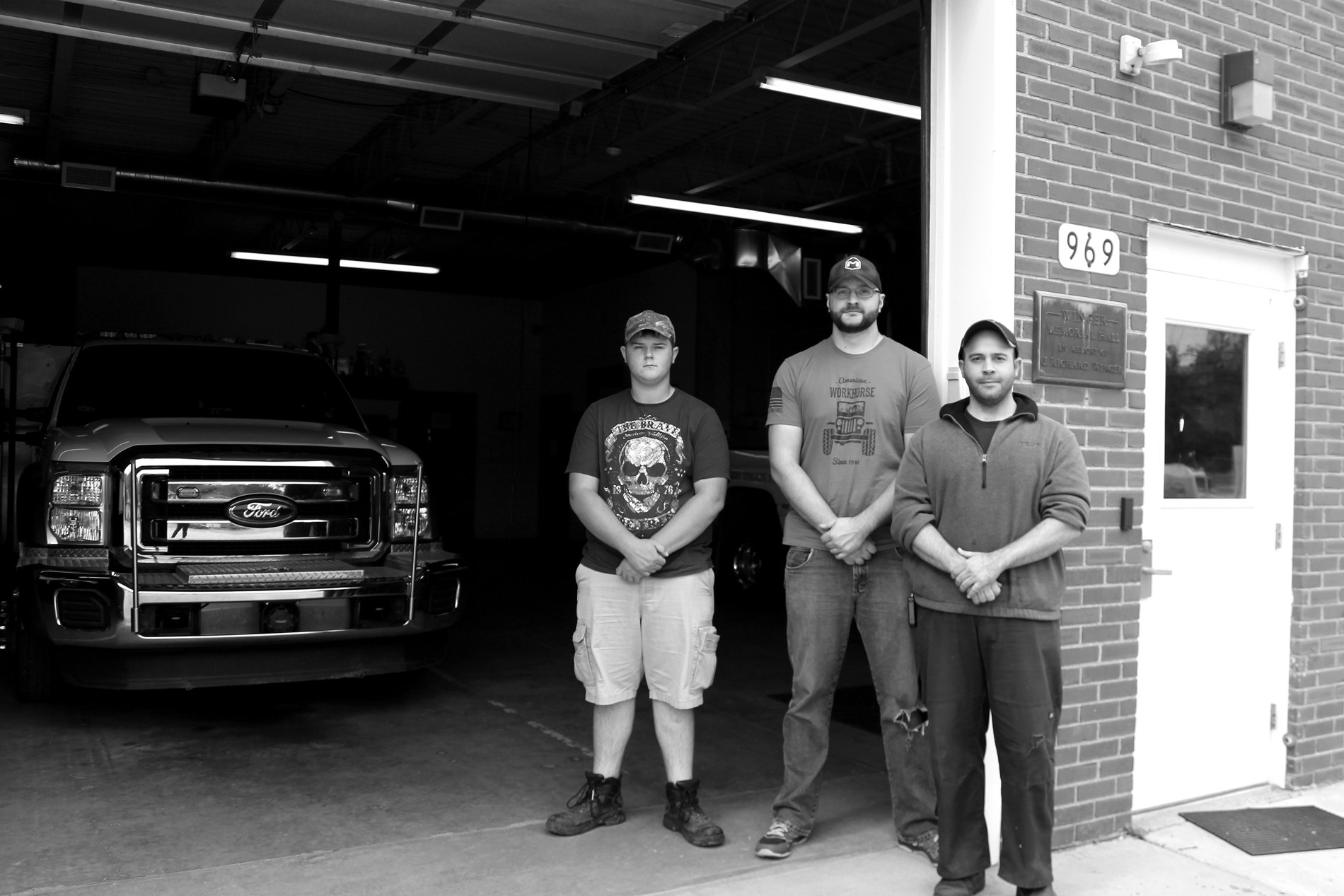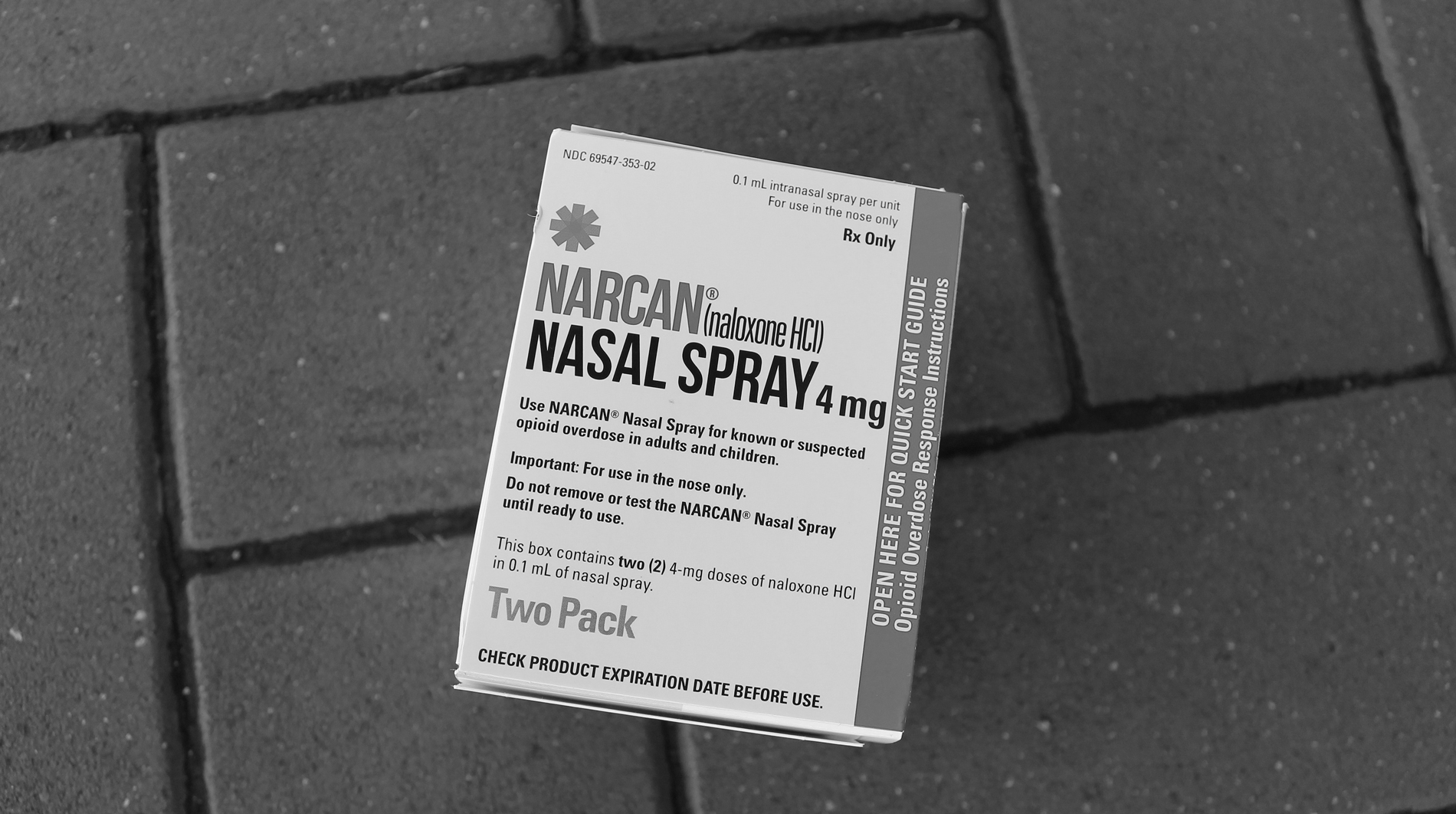In August 2015, the North Beaver Volunteer Fire Department had 20 runs. In August 2017, they had 49. They don’t attribute the entire increase in calls to opioids, but they have seen a significant increase in drug-related calls, said Chris Snedeker, deputy chief and acting fire chief of the North Beaver Volunteer Fire Department. “We see it moving out of the city and impacting our community,” said Snedeker, who grew up in the rural part of Lawrence County he now serves.
Increased impact
“When I first started, we really didn’t get many calls related to overdoses, maybe an occasional person who took too much medication, but not to get high,” said Tyler Claypool, who has been with the department for six years.
“Two years ago, we saw an increase when fentanyl, and now carfentanil, hit the scene. We’ve seen a lot more back-to-back calls for ODs. We get 15 or 16 calls a month,” said Claypool.
Devon Fagan has been with the department for three years and is one of its youngest members. He joined right when overdoses really spiked. “My first call ever was to an overdose — actually my first three calls were.”
Stretched thin
Volunteer fire departments everywhere are functioning with more calls and fewer volunteers, said Claypool.
The average commitment of an active volunteer firefighter is about four years, Snedeker said. “After that, family stuff comes up or they get burned out, it seems.” Snedeker works in a warehouse during the day and takes as many calls as he can when he is not at work.
The North Beaver department, in the rural northwest corner of Lawrence County along the Ohio line, started in 1947. It has 64 members on the roster with about 20 active. There is no mandatory training to be a volunteer firefighter in Pennsylvania, but the amount of training needed to be effective has increased.
Gas mileage and wear and tear on their equipment has also increased in Lawrence County’s 22 volunteer fire departments, which are funded by tax dollars and fundraisers.
Burn out
As the opioid epidemic continues to pound rural communities, it is easy to see why volunteers might get burned out. The North Beaver department had 49 runs in August, 39 in July and 39 in June.
“It is the same handful of people. Some are longtime residents that had an injury [and] were prescribed an opioid from a doctor and got hooked,” Claypool said.
Others are more transient residents who live in the apartments, rentals and trailers in the area, said Snedeker. “It is the same people over and over. We are at the same residence every couple months.”
Though they see fewer incidents than first responders in New Castle, the only city in the county, addiction is impacting rural and urban communities alike, he said.
Naloxone
Naloxone training and drug issues have changed the way volunteers respond to a call.
“Narcan used to be administered through an IV. It was just a different process,” said Snedeker, who has been with the department for 12 years and served eight years as a Marine.
“I used to go on an EMS call by myself and not think anything of it. Now, when you receive the call, it is best to make sure someone is with you,” said Snedeker. That’s because when you revive someone who has overdosed and they are coming out of it, they can be combative. “You don’t know what you are getting into.”
Rural reality
“Out here, we don’t have full-time police, so sometimes they send the state police, but then you have to wait for them,” Claypool said. “It can be up to 20 minutes before an ambulance makes it out here.”
The department now carries multiple doses of naloxone, the opioid-overdose antidote, in its trucks so responders don’t have to wait for the police or an ambulance.
“Our goal is to be fast to get there and administer,” Claypool said.
“With heroin, we’d give them one dose and they’d wake up, two times tops. Now with carfentanil, we’ll hit them three or four times before they respond,” Snedeker said.
Fatigue
Some in the community, and even some first responders, are tired of the drug problem, and they’ve heard comments in the community such as, “just let them die.”
“It is still someone’s family member. That poor family is trying everything they can to get that person off drugs,” Snedeker said. “For many, it wasn’t started as a recreational drug, something they wanted to do for fun at a party. They had an incident, were prescribed the painkillers and now can’t kick the addiction.”
“We do it for the family — the pain-stricken mother or father or friend at the scene when we arrive,” said Claypool. “We do it for them.”
(Reporter Katy Mumaw welcomes feedback by phone at 330-337-3419 or by email at katym@farmanddairy.com.)

















